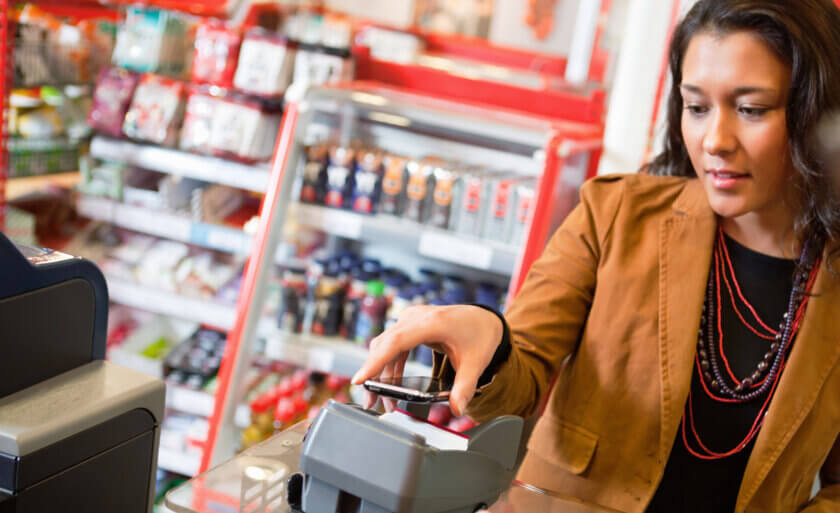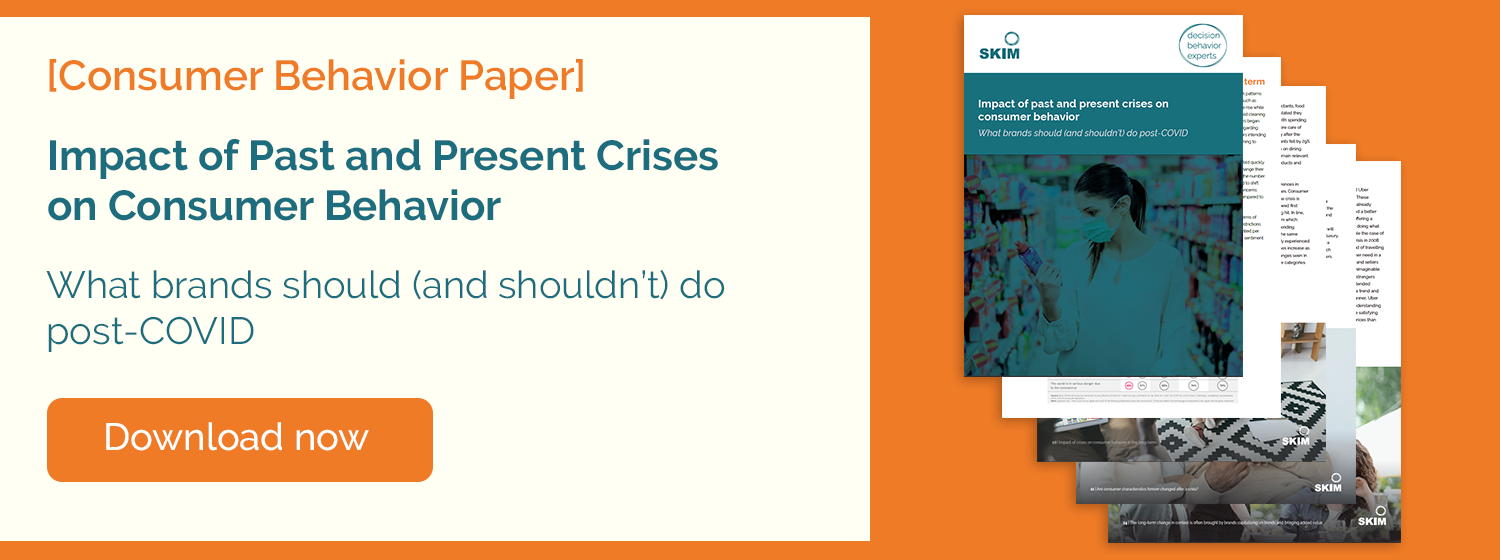People are poor predictors of their own behavior. Context changes corrupt their intentions. A context change may be as simple as a product discount, or as complex as a severe crisis. In both situations, the question is whether behavior changes, and particularly whether it will subsequently stick. We argue that, after the current crisis only a few new routines will establish. Trend lines from before a crisis will be similar after the crisis, maybe somewhat mitigated or accelerated.
Here we reflect on past crises and share 3 pitfalls consumer brands should avoid in preparing for the recession.
Back to normal: Recurring trends
The COVID-19 crisis currently triggered changes in consumer behavior:  , increased Netflix usage, decreased airline travel, etc. These behavioral changes have occurred during a crisis, but what if we take a long-term view?
, increased Netflix usage, decreased airline travel, etc. These behavioral changes have occurred during a crisis, but what if we take a long-term view?
If we look at the examples from previous crises, not much seems to change:
- In August 2001, 65.4 million people travelled by airplanes, an all-time high. After 9/11, that number fell dramatically. It seemed consumers were never going to overcome their fear of potential terrorist attacks, destroying the airline industry consequently. However, in July 2004, the industry matched and eventually surpassed the pre 9/11 levels.
- During the SARS epidemic in 2003, consumers stockpiled on disinfectants, food and beverages and refrained from buying luxury, clothing, and durable goods. Sounds familiar? Consumers stated they would continue to dine out less, cook more and be more health conscious. You guess what happened. After the epidemic was contained, the sales of disinfectants fell by 29% and dining out rebounded.
- Following November 2015 attacks in Paris, hotel occupancy rates and restaurant clientele fell by 70%. In January 2017, the number of people checking into Paris hotels reached a 10-year high of just over 1.5 million.

Crises are characterized by shifts in behavior, where consumers focus more on their immediate needs, such as their wellbeing or need for connection. Specifically, recessions cause people to be more price-aware, while pandemics push people to seek safety and protection. During prolonged risk exposure, such as with the COVID-19 virus, we see consumers resiliently returning to their “normal”, previous routines.
We see around the world consumers are out shopping in stores again, dining out and planning travel (even with new restrictions in place). Returning to routines is faster for non-durable purchases, since the purchase of durable goods can be postponed. Effects are already seen in China, where consumers are returning to focus on more sustainable brands and fresh foods, trends recurring from pre-COVID19.
Nobody can predict how long the crisis will last. But one thing is sure. Habits are strong, habits stick, habits recur. Trends recur, because consumer behaviors recur.
Nothing changes? Think about innovation
Since behaviors temporarily change during a crisis, we see changing behavior and buying patterns during a crisis. Consequently, this is the best moment to introduce new, relevant products and services. A change in context breaks consumer habits, hence crises are triggers for change in consumption. Some of these changes stick.
An example could be Netflix Party, a Google Chrome extension that allows friends to synchronize watching and that comes with a chat function. People sign up for Netflix because of the need for entertainment during the crisis, now it is essential for Netflix to keep the new customers. An innovation doesn’t need be significant. More people working from home can lead to an increase in larger volume purchases of food items for in-home consumption. Considering this behavioral shift brands may be urged to offer larger packs.


Although trends recur, on an individual level consumers may not able sustain their previous behavior, e.g. because of financial reasons during a recession. They may switch from premium brands to cheaper brands or private labels. Their product experience may be equal, or they perceive better value-for-money. A new behavior may also stick, also when they are employed again.
A clever innovation may succeed despite a crisis.
In 2001, Procter & Gamble’s introduced a new product category by launching Swiffer WetJet that made mopping floors easier. Consumers embraced it, crisis or no crisis. The end goal of the behavior, a clean floor, is still relevant; the means to reach the goal changes.
Brand pitfalls consumer goods companies should avoid during a recession
Pitfall 1: Ignore pre-crisis trends
Trends will recur. So, most of your pre-crisis strategies (for example, online shopping, focus on sustainability, health, etc.) will still be valid.
Check the relevance of your pre-crisis strategies and assess their value. If need be, adapt. For example, we expect online shopping will continue to accelerate, so consider where you can optimize your eCommerce strategy.
Pitfall 2: Stop innovation plans
Introducing cheaper alternatives is a straightforward option, aimed at recession-hit consumers. However, what new alternatives will be considered by consumers? Re-prioritize your innovation pipeline.
A re-shuffling of pre-crisis concepts may be needed.
For example, a recession-proof new product, size or offer may be on top of the list. Remember that during a recession, people will be on the lookout for better solutions to their needs. Consider how consumer perceptions may have shifted in your category.
Pitfall 3: Focus on price promotions
Frequent reductions and buying market share can damage long-term value, price perception and revenue potential.
Although a segment of your consumers (1%?, 5%?, 15%?) will be hit by the crisis, the majority will still has the same buying power. Read our 6 pricing tips for adapting revenue management strategies following COVID-19
—
So, most of what you did will still be valid, but we advise to really understand your consumers’ behavior, reassess your long-term strategies, your innovation pipeline and be careful with price promotions. Want to learn more about how to shore up your marketing strategies for the recession?  and we’ll help think along as you plan the next steps of your NRM strategy.
and we’ll help think along as you plan the next steps of your NRM strategy.
 Visit our COVID-19 and Decision Behavior Disruption knowledge center for more content in this series.
Visit our COVID-19 and Decision Behavior Disruption knowledge center for more content in this series.
We are sharing additional theories, best practices and tips on decision-making, eCommerce, innovation, and revenue management strategies. Our goal is to provide inspiration, answers to common questions we’re receiving and help you navigate the new normal.



